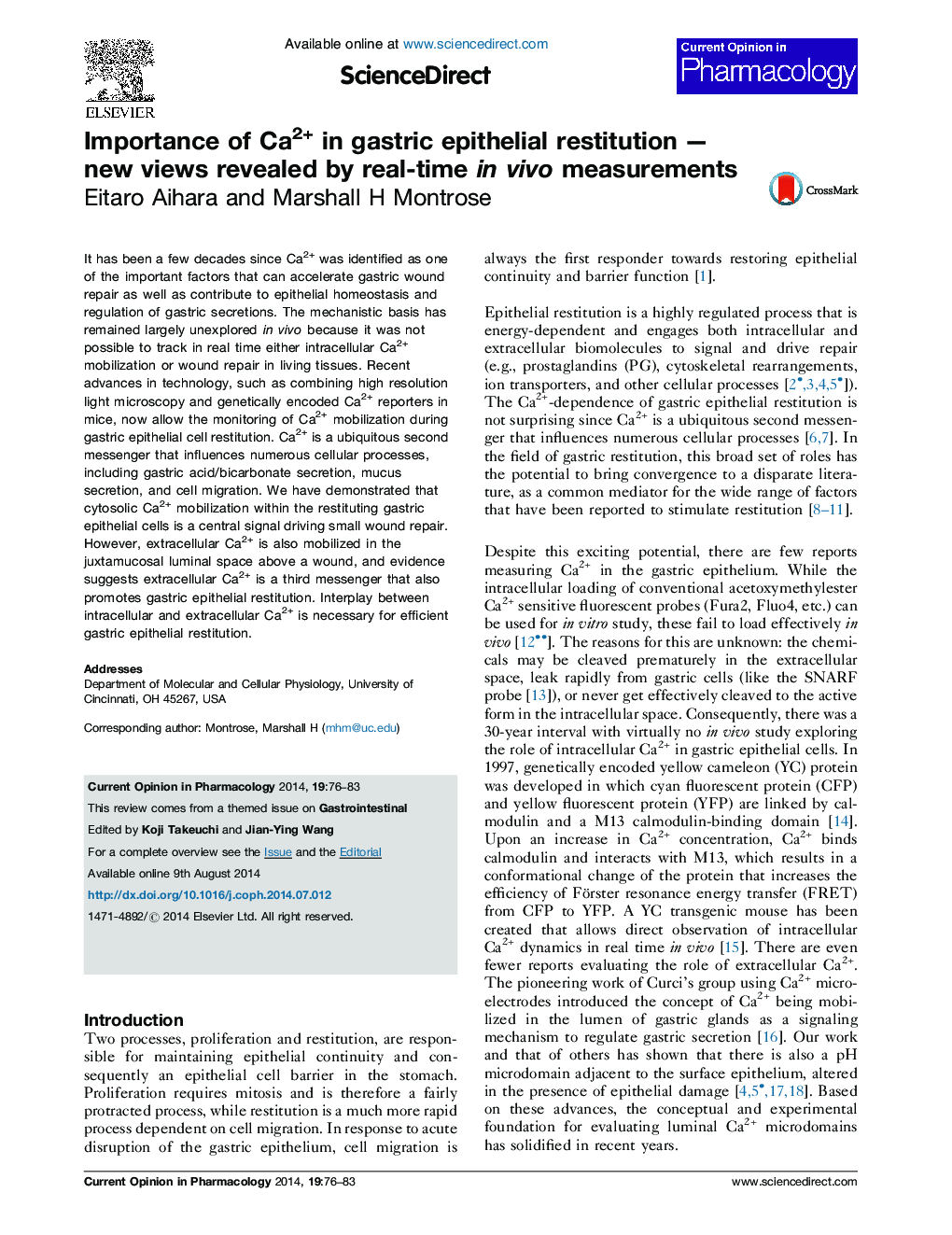| Article ID | Journal | Published Year | Pages | File Type |
|---|---|---|---|---|
| 2529912 | Current Opinion in Pharmacology | 2014 | 8 Pages |
•Two-photon microscopy allows unique opportunities for monitoring of gastric events.•Two-photon damage model reveals functional microdomains of Ca2+ mobilization.•Intracellular Ca2+ increases selectively on restituting gastric epithelial cells.•Gastric luminal Ca2+ accelerates gastric epithelial cell restitution.
It has been a few decades since Ca2+ was identified as one of the important factors that can accelerate gastric wound repair as well as contribute to epithelial homeostasis and regulation of gastric secretions. The mechanistic basis has remained largely unexplored in vivo because it was not possible to track in real time either intracellular Ca2+ mobilization or wound repair in living tissues. Recent advances in technology, such as combining high resolution light microscopy and genetically encoded Ca2+ reporters in mice, now allow the monitoring of Ca2+ mobilization during gastric epithelial cell restitution. Ca2+ is a ubiquitous second messenger that influences numerous cellular processes, including gastric acid/bicarbonate secretion, mucus secretion, and cell migration. We have demonstrated that cytosolic Ca2+ mobilization within the restituting gastric epithelial cells is a central signal driving small wound repair. However, extracellular Ca2+ is also mobilized in the juxtamucosal luminal space above a wound, and evidence suggests extracellular Ca2+ is a third messenger that also promotes gastric epithelial restitution. Interplay between intracellular and extracellular Ca2+ is necessary for efficient gastric epithelial restitution.
